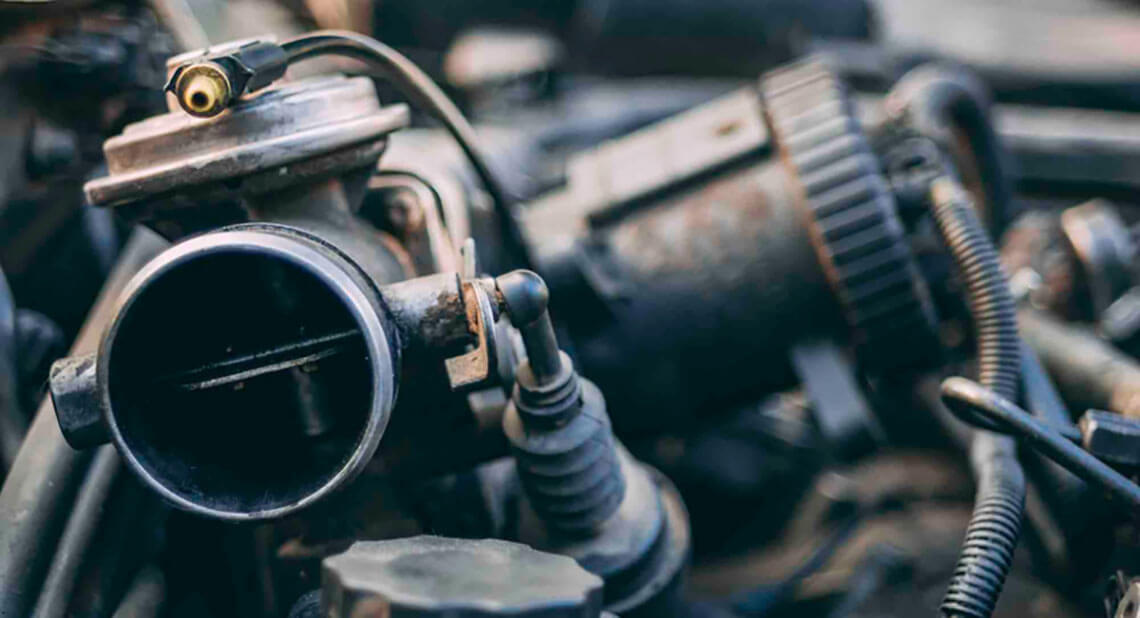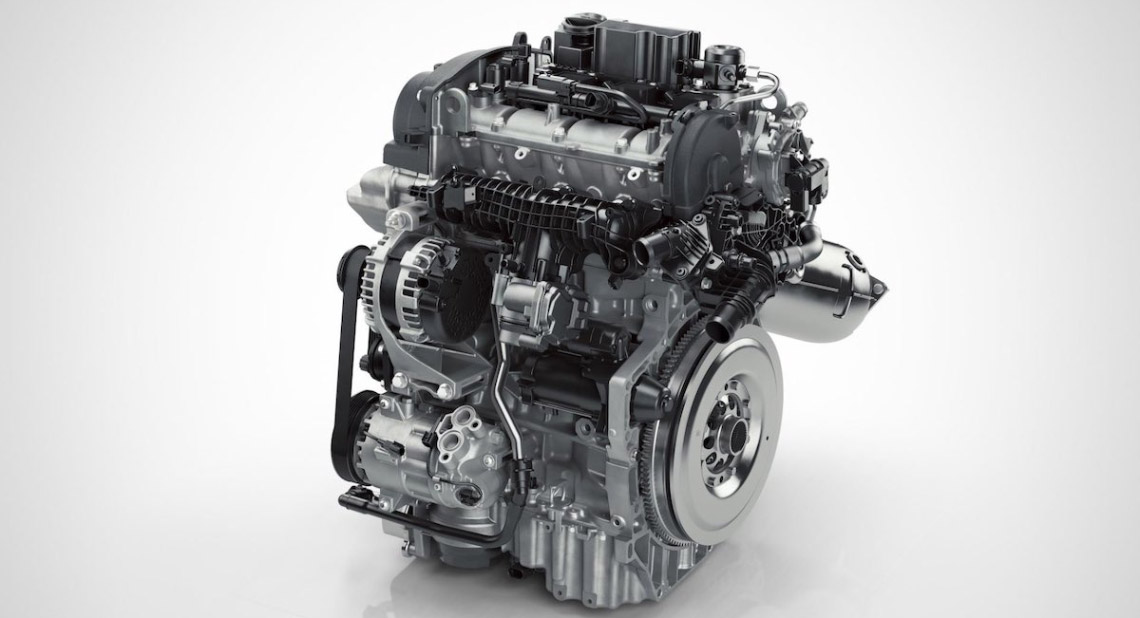Unusual smoke from your exhaust may indicate serious problems in your exhaust system or inside the engine. If you see different coloured exhaust fumes it’s important to pay attention as this could be a signal that something might not be working properly. In this article, Car Buyer explains what the difference is between the various exhaust smoke colours, so that you can get this checked out if there’s anything unfamiliar with your car.
Unless you drive an electric or fuel-cell car, the chances are that it has a petrol or diesel engine under the bonnet. This turns fuel into forward motion by harnessing the energy of thousands of tiny explosions as it’s ignited.
Of course, as anyone who’s ever started a barbecue will confirm; lighting any fuel creates a certain amount of smoke, and that has to go somewhere – usually onto whatever’s on the washing line. In a car, though, this smoke is taken from the engine through its exhaust valves – but how much should be coming out of the back of the car?
It can be completely natural for a little smoke to come from an exhaust pipe – which is the equivalent of a car’s chimney. It uses air pressure to draw waste gases from the engine and vent them to the atmosphere. Some of these gases can take the form of smoke, but as cars become more fuel efficient and exhaust emissions are reduced, it’s becoming increasingly unusual to see clouds of thick smoke coming from the exhaust.
An occasional puff of smoke from the exhaust when accelerating isn’t necessarily anything to worry about – we all like to clear our lungs sometimes and our cars are no different. If you begin to notice smoke more frequently, though – be it white, blue or black – read on for a few hints on what it could mean.
Black smoke from your exhaust
It may seem contrary to what you’d expect, but black exhaust smoke is possibly the kind to be least concerned about, particularly if you drive a diesel car. However, with modern engine and emissions control systems, black smoke should be a very infrequent occurrence, and could point to a fault or worn engine.
The most frequent times to get black smoke from a diesel exhaust are the the first moment the engine is switched on, especially from cold, and when hard acceleration is suddenly called for. In these cases, the black smoke that comes from the exhaust – often in very thick clouds – is diesel that has passed through the engine without being completely burnt.
The reason this is more common with diesels than petrol engines is because the fuel is compressed to ignite it, rather than being lit with a spark from a petrol engine’s spark plug. A combination of pressure and heat is required to ignite diesel; this is what your glow plugs are for and why smoke is more likely before your engine has reached its usual operating temperature.
If black smoke constantly pours from your diesel car’s exhaust, though, it’s probable that something’s wrong. The most likely culprit is one or more worn fuel injectors. When new, a fuel injector sprays diesel through a very fine nozzle, and because the computer knows how quickly fuel can pass through it, it knows how much fuel to supply. If this nozzle wears and becomes enlarged, the computer can end up supplying too much fuel, and this might pass through the engine without being completely combusted, resulting in clouds of black smoke.
The majority of modern cars have something called a Diesel Particulate Filter (DPF), which is intended to prevent this black smoke, or soot, leaving the exhaust. It uses a specially designed metal mesh to catch and store the soot, with sensors telling a computer when it’s full. Then, the computer will choose a time when the engine is running at full temperature – during a fast motorway run, for example – to raise the temperature of the DPF and burn the soot off.
As the temperature is so high, the soot is burnt off with very little smoke, and the process only takes a few moments. Once complete, the filter is clear and can continue to trap carcinogenic particulates until the next time it becomes full. If the filter becomes blocked or broken, you’ll usually experience a warning light on the dashboard and a noticeable loss of power.
Petrol cars don’t have a DPF, but any instance of black smoke from the exhaust is likely to point to overfueling in much the same way as a diesel. It’s more likely to be experienced if your car is turbocharged – here, the turbocharger acts as an exhaust-driven pump that forces extra air into the engine, where it’s joined by additonal fuel to give increased power. However, that extra fuel will only be burnt properly if enough air is supplied.
If your turbocharger is worn, or there’s a ‘boost’ leak from its pipework, the turbocharger might not supply enough air for this extra fuel to be properly burnt, in which case it will be disposed of through the exhaust.
If black smoke becomes frequent or constant, it’s vital that you refer your car for urgent repair. Not only will your fuel consumption increase, you risk damaging sensors and components in the exhaust system, as well as the catalytic converter on a petrol engines.
Blue smoke from your exhaust
Blue exhaust smoke, which comes in a variety of shades depending on how thick the smoke, is a sign of engine oil being burnt. All engines will burn a tiny amount of oil – the cylinders are lubricated by a thin screen of oil on the surfaces that the pistons thrust up and down against – and some of this will naturally make its way into the combustion chamber, particularly on brand new or high-performance engines. This is why your engine’s oil level will naturally go down, and one reason that it changes in colour.
However, in a healthy engine too little should be burning to produce visible smoke, and if you can see blue smoke – or smell its distinctive aroma – it’s likely that a repair is necessary. The good news is that it’s not necessarily a big, expensive job, but the bad news is that it can be.
The thing to investigate is where the burning oil is coming from. A common culprit is the turbocharger, if fitted. The moving parts of a car’s turbocharger are lubricated by an oil feed from the car’s sump, in order to reduce friction and maintain efficiency. There’s a possibility of this feed leaking, though, and if oil joins the flow of air being pumped into the engine, it will enter the cylinders and get burnt. If the fault is with the feed itself, the repair could be inexpensive. If the turbocharger itself is at fault, though, it will need rebuilding or replacing, and that can be costly.
Older cars, or those that have covered a high mileage, can become smokey over time due to natural wear and tear. The cylinder walls, the pistons and their valves will all eventually wear and allow oil to pass where it shouldn’t. Once this begins to happen, the engine will either need to be repaired, rebuilt or replaced. It is possible for oil entering the cylinders to be a sign of head gasket failure, too, but we’ll discuss that further below.
White smoke from the exhaust
When a white cloud comes from your exhaust, it’s vital to determine whether what you’re looking at is actually smoke or just perfectly normal steam. At some times of the year, particularly when it’s very cold outside, really quite substantial amounts of white ‘stuff’ can come from your exhaust, but there isn’t necessarily anything wrong.
Most cars will emit steam from the exhaust on start up, which will gradually fade as the engine and exhaust reach their natural operating temperature. However, as with the other colours discussed already, the thicker and more constant the white smoke gets, the more likely it is that there’s a fault.
White smoke can actually be a very light shade of blue, which indicates that oil is entering the cylinders and getting burnt – see the section above for more on this. However – constant thick white smoke is usually a sign that coolant is being burnt, and you definitely don’t want that to happen.
The most traditional cause of this is head-gasket failure. The head gasket is a thin, shaped metal sheet sandwiched between the cylinder head and block – the top and bottom parts of most engines. It’s there to form a seal between the two parts, and to prevent coolant leaking from the jacket that surrounds the engine.
Sometimes, wear and tear causes this gasket to fail and coolant is no longer contained within the water jacket or the cooling channels that run throughout the engine. And if it fails around a cylinder, it will let coolant flow into the cylinder, where it will be burnt and steam will come from the exhaust at high pressure. As the wear increases, more coolant will flow into the cylinder, and the steam will increase – this can happen quite suddenly.
It’s vital that you stop the engine as soon as you can if this happens. If the trickle of coolant becomes a flood, it can cause serious internal engine damage that isn’t always repairable. What’s more, if the engine runs out of coolant altogether, it could overheat and lead to further damage.
This is why its just as important to check your engine’s coolant level frequently as it is to check that that it has the right amount of engine oil.
This article was written by Chris Haining from Car Buyer and was legally licensed through the NewsCred publisher network. Please direct all licensing questions to legal@newscred.com.
Related articles
When to use car lights: The complete guide
Quick hints for making the most of your car on a budget
![]()







